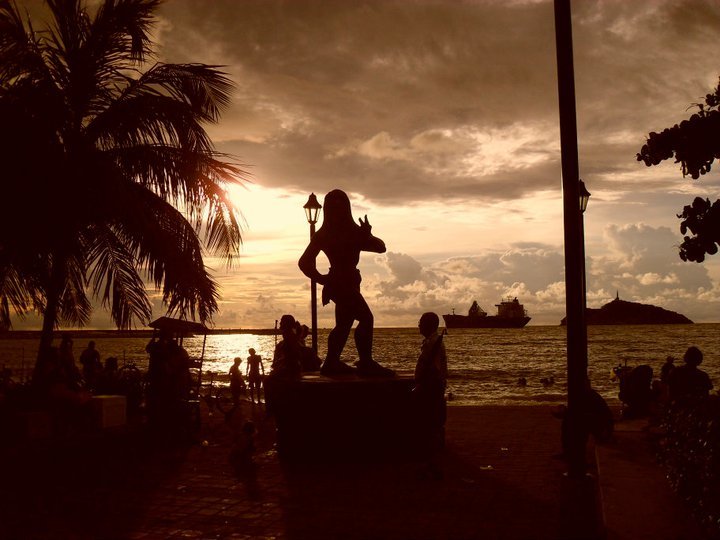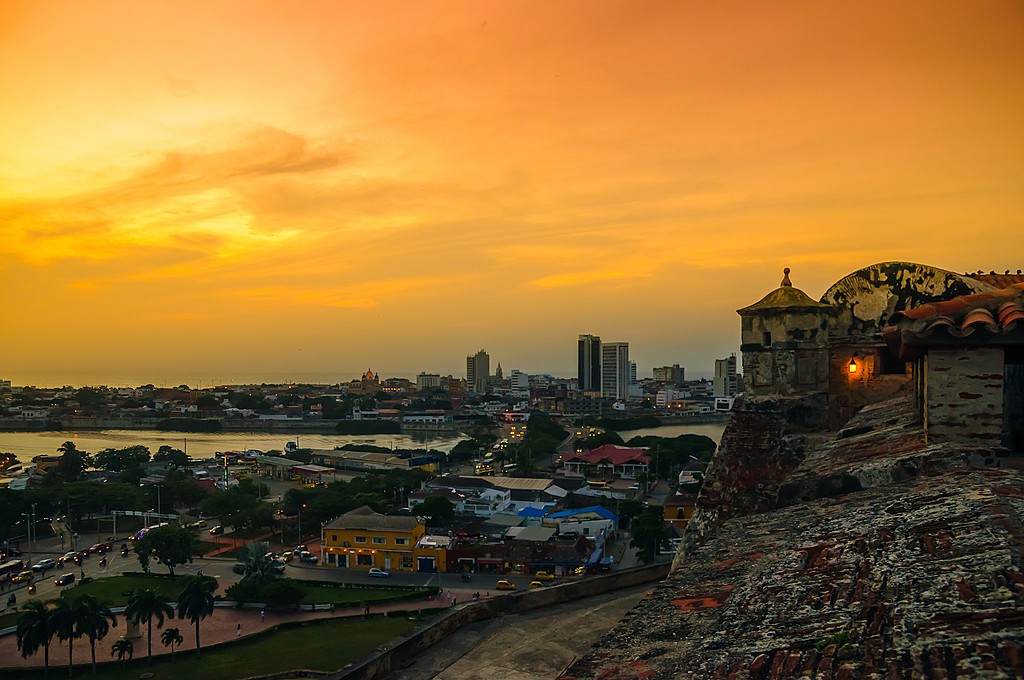Cartagena and Beyond
Cartagena de Indias draws visitors from all over the globe because of the timeless quality of its cobbled streets. Here colonial plazas, ancient churches, boutique hotels and wooden balconies draped with vivid bougainvillea blossoms are the norm. Plus, those famously hulking stone fortresses and ramparts that guard this Caribbean city against the ghosts of long-dead pirates.
However, Cartagena's gems aren't merely located within its stone walls. Travel just a little way outside of town and you'll encounter pristine Caribbean beaches, protected islands, local weekend retreats, and, most famously, the very colonial town where Colombia itself was founded centuries ago. The best part is you can enjoy each of these destinations in a day trip.
Before you head out of town, check a few things off this list of the Best Things to Do in Cartagena. And if you happen to be traveling with the family, here's a kid-friendly roundup.
Playa Blanca

Travel in the immediate vicinity of Cartagena's historic center and you won't find beaches of the Caribbean standard we've grown accustomed to. But journey outside of town to the islet of Barú and you'll arrive at Playa Blanca, located just offshore of Cartagena. It's hard to believe this pristine beach lies so close to the city's cobblestone plazas.
The order of the day here is relaxation and nothing more. Dig your toes into the fine white sand, enjoy some beers (or local fruit juice), sunbathe and play in the waves. There are some rustic lodgings at Playa Blanca and plenty of beachfront restaurants serving delicious coastal staples like fried fish, plantains, and coconut rice. To get there, take one of the speedboats that leave from the Muelle Turistico (Tourist Pier) in south Cartagena. But if you don't like boats, don't worry: Playa Blanca's status as the closest island to Cartagena means it's also connected by road, so you can take a shared taxi or bus as well.
Chat with a local specialist who can help organize your trip.
Islas Corales del Rosario

Not done with beaches yet? You're in luck because an archipelago of coral islets surround Cartagena. Located just to the southwest of Playa Blanca are Islas Rosario and San Bernardo, which are just two of the 30 islands that comprise Colombia's Parque Nacional Natural Corales del Rosario y San Bernardo. These islands, like Playa Blanca, are reached by speedboats which depart from the Bay of Cartagena. Alas, no road will take you to there.
This protected area of the Caribbean is home to many isles, but visitors typically flock to Isla Grande, because it is the biggest and most protected. Here you'll be treated to plenty of avian life, plus there's great snorkeling in the immediate vicinity. You'll find inviting white-sand Caribbean beaches, just like at Playa Blanca, as well as that sumptuous costeña (local) food. Try some ceviche, or perhaps buy a fresh-caught lobster from a beach vendor and have a BBQ.
La Boquilla Fishing Village

The small village of La Boquilla, only 20 minutes north of Cartagena by taxi, is an ideal place to learn the traditional fishing methods that have long sustained Colombia's Afro-Caribbean coastal communities. After breakfast, head outside of the city and meet your guide, who will take you out on the water in a wooden boat. Learn to cast a net, assist in checking cages, and chat about life as a fisherman before returning to La Boquilla to prepare your catch of the day.
Done fishing? There's more to do during your visit. There is a decent beach here, along with a few shanty-style restaurants where you can order a plate of seafood with a side of plantains and rice. There's also a decent beach here that's popular with kiteboarders, and it can be fun to watch them in action—if you want, you can even take a lesson. For more local immersion, the small village behind the beach is a good place to experience life in a barrio.
Isla Tierrabomba

We're not done with islands just yet. Another attractive option for an escape from city life, Tierrabomba, is a natural island barrier between Cartagena and the open sea. In fact, its Tierrabomba's strategic location (between Isla Barú and Cartagena's southern upscale neighborhood of Bocagrande) that made it a good spot for the Spanish to erect defenses. Here you'll find Fuerte San Fernando, one such Spanish fort that sits on the southern tip of the island. Aside from Castillo San Felipe de Barajas, it's one of the most impressive defensive structures in the region.
Built at the beginning of the 18th century, San Fernando is a sizeable fort, with many impressive battlements and lookout points. Glance just across the Bocachica channel and you'll see another small fort, Fuerte San José, perched at the end of Isla Barú. At one point these two defensive structures were connected by a long chain to prevent any unwanted ships from advancing on the coast.
Santa Marta & Tayrona National Park

Santa Marta is typically recommended as an overnight trip—each leg of your drive is over 4 hours long— but if you don't have much time, it's possible to make the trip in a day. Founded in 1504 by a wayward Spanish conquistador, Santa Marta was the first town in Colombia settled by outsiders—and walking around the evocative colonial quarter, you get the sense that little has changed in the intervening years. Sure, there are cars driving the streets, supertankers in the harbor, and all the trappings of modern life, but the colonial heart still beats.
The indigenous spirit exists here as well, as seen in the statues of native Tairona tribesmen lining the bayside boardwalk. If you're intrepid enough (and prepared to wake up early), you can make the drive from Cartagena in the morning and arrive there by 11 am. Then hop a speedboat from the adjacent fishing village of Taganga for the 45-minute ride to Parque Tayrona, one of Colombia's most breathtaking national parks (in a country full of them). Spend the afternoon relaxing on the windswept beaches of its flagship Caribbean cove, Cabo San Juan. Fun fact: the park is managed by the Kogi people, direct descendants of the Tairona tribe. They even close the park one month a year (typically in January and/or February) for a spiritual cleansing ceremony.
If you're interested in spending more time in this region, check out our 14-day itinerary of what to do on the Caribbean coast.
